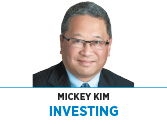Subscriber Benefit
As a subscriber you can listen to articles at work, in the car, or while you work out. Subscribe Now September has been the weakest month for U.S. stocks going back to 1950.
September has been the weakest month for U.S. stocks going back to 1950.
The Wall Street Journal headline on Sept. 21 brayed, “Stocks record biggest slump since spring.” It’s been more than 300 days since the S&P 500’s last 5%+ pullback, the 13th-longest streak on record, so that downdraft was not particularly surprising.
As the calendar flips to October, investors will face various scary “ghosts and goblins,” including the collapse of one of China’s largest real estate developers (China Evergrande Group), the recurring brinksmanship over raising the debt ceiling to forestall a government default/shutdown, and the Federal Reserve’s removing pandemic-related emergency measures.
Headlines have created anxiety about Fed plans to begin the “tapering” process as early as November. Given, one, that ultra-low interest rates have fueled the stock market’s tremendous advance since the Fed instituted emergency measures in March 2020 and, two, that 10-year U.S. Treasury yields surged from 1.94% to 2.96% during the “Taper Tantrum” of 2013 (when the Fed surprised investors by signaling “tapering” was imminent, crushing bond prices), investors are understandably concerned about removing those measures.
“Tapering” is a bit of financial jargon, so I hope shedding some light on this esoteric topic will lessen some of its mystery and apprehension.
The Fed uses “monetary policy” to control the cost and availability of credit to promote two primary goals: “full” employment and stable prices. In early 2020, the pandemic brought our economy to an immediate standstill, threatening the worst crisis since the Great Depression. The Fed quickly revisited its playbook from the Global Financial Crisis of 2008, slashing short-term interest rates to zero and restarting “quantitative easing” (QE), purchasing $80 billion of U.S. Treasury bonds and $40 billion of mortgage-backed securities on the open market each month. This constant buying supported bond prices and kept longer-term interest rates low.
These two actions combined to make credit both cheap and abundant. Fast-forward 18 months and our economy has recovered, inflation is higher and asset prices have soared.
Last week, Chairman Jerome Powell indicated that the Fed would likely begin scaling back bond purchases “soon” (as early as November) and stop altogether by the middle of 2022. His comments were the clearest indication yet the Fed believes the economy no longer needs as much assistance as it did in early 2020.
Employment has not fully recovered, but unemployment has decreased from 14.8% in April 2020 to 5.2% last month. While the jury is still out on whether currently elevated inflation is “transitory” and due to pandemic-induced supply imbalances, it is likely inflation is still running higher than the Fed’s long-term target of +2%.
It’s important to note that “tapering” should not be confused with the Fed “tightening” credit, which would imply the Fed is ending QE (selling bonds it had previously purchased during the pandemic) and raising its target for short-term interest rates. Indeed, Powell stated emphatically the decision to raise interest rates will be a totally separate conversation (we think late 2022, at the earliest).
Investors will continue to be razor-focused on economic indicators. Signs of weakness will slow the pace of tapering, while signs of strength will speed it up. Either way, as investors adjust forecasts for the timing and magnitude of “tapering,” volatility will rise.
We think it’s likely Powell will be very cautious about tapering too quickly and risk choking off the economic recovery. Personal experience impacts us all, and Powell had a hand in three prior Fed policy changes that, in hindsight, proved to be wrong.
In 2013, he pushed then-Chairman Ben Bernanke to “taper” the pace of the bond-buying in the Fed’s quantitative easing program, which set off the aforementioned “taper tantrum.” In 2015, he supported the decision to begin raising short-term interest rates, which led to a premature slowing of the economy. In 2018, under his leadership as chairman, the Fed embarked upon a series of four interest-rate hikes, the last of which sent the markets into a tizzy and caused Powell to backtrack within days.
While we aren’t out of the woods yet, our economy is back on its feet. It’s unambiguously good that the Fed is in a position to decide when (not if) the patient can be removed from life support. That was far from a certain outcome in the darkest days of early 2020.•
__________
Roger Lee, CPA, CFA, senior research analyst contributed to this column. Kim is Kirr Marbach & Co.’s chief operating officer and chief compliance officer. He can be reached at 812-376-9444 or [email protected].
Please enable JavaScript to view this content.
